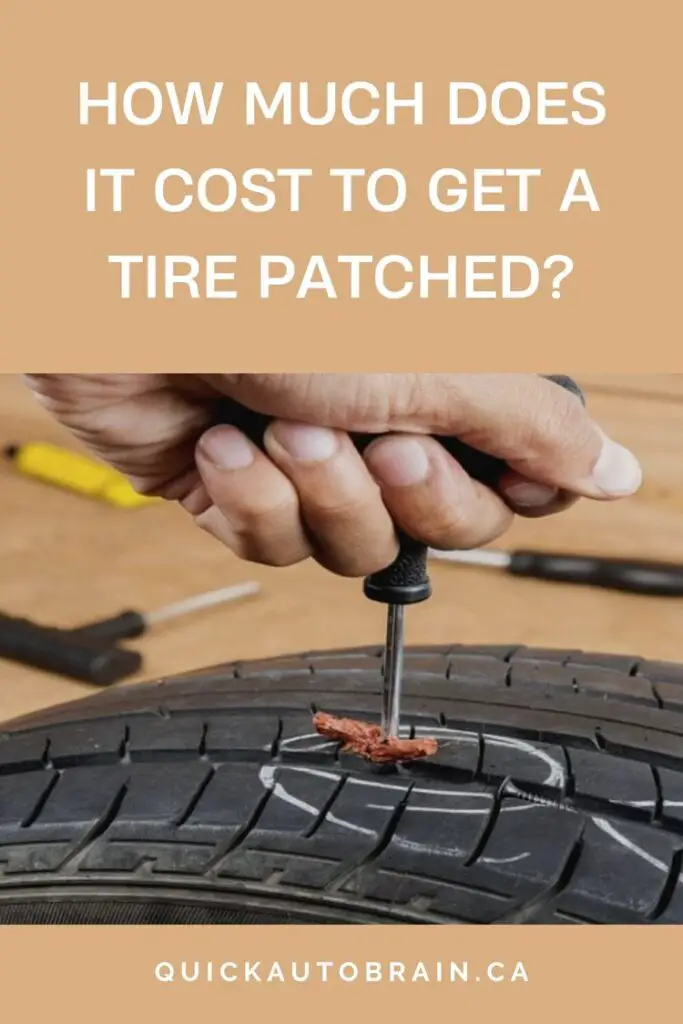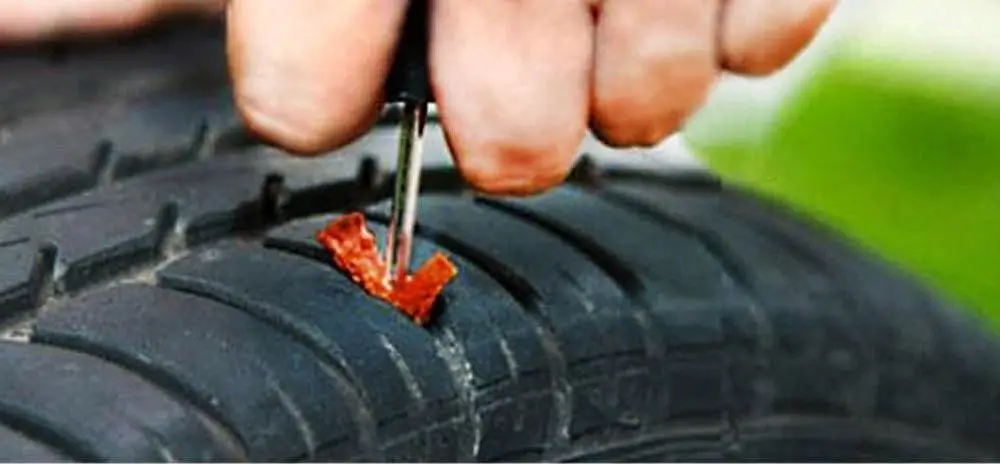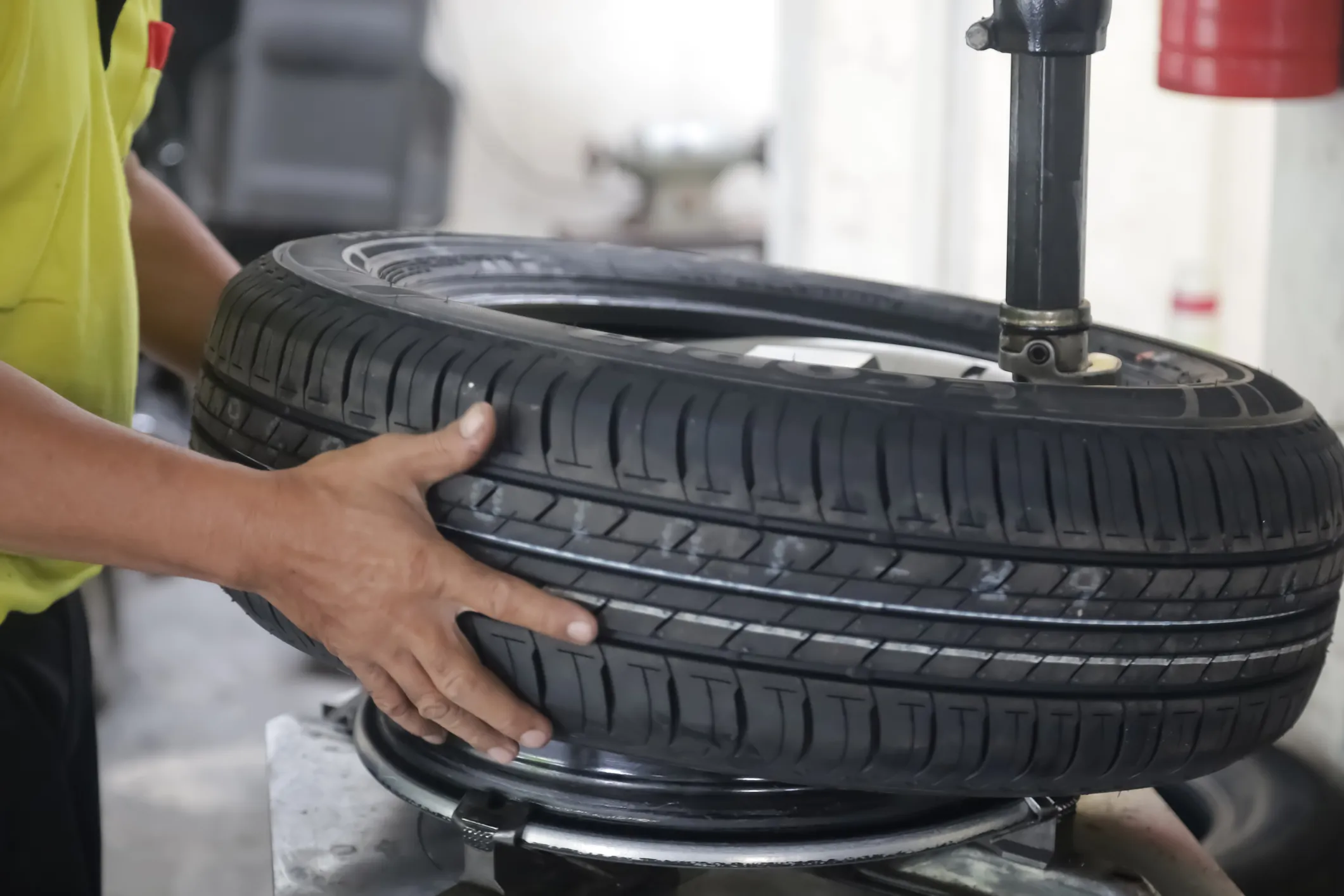When your tire develops a hole, one of the least expensive fixes is to apply a patch. It would be beneficial if you thought about if this fix is cost-effective. In the event that the damage is too extensive to be repaired, the mechanic might advise a new installation.
People use the patch method because their car does not have too big a problem, and they just need to perform small tips to save the budget.

However, not everyone is good at this, and the best solution for them is to seek the help of repair shops. So, how much does it cost to get a tire patched?
This task will cost you between $5-$20, depending on the severity of the tear.
How Much Does It Cost To Get a Tire Patched?
Tire patching is a technique to make the wheel part look like it did originally. People utilize the patch approach since their cars don’t have major issues and they only need to make tiny adjustments to save money.

However, not everyone is skilled in this, thus the best option for them is to look for assistance from repair facilities. What does it cost to fix a tire then?
Your expenses will range from $5 to $20, depending on how severe the tear is. Of course, if you purchase their new tires, some businesses will provide them to you for free!
Importance of Addressing Tire Punctures Promptly
Anyone can get flat tires at anytime, anyplace, and in Alberta, changing flat tires is actually a pretty common auto maintenance process.
If a flat tire is not fixed right away, it could result in more severe wheel and rim issues. For this reason, even if there is only a minor case of underinflation, the majority of responsible automobile owners in Alberta seek auto repair assistance for flat tires.
Here are the importance of regular tire maintenance:
- Safety: A punctured tire can lead to loss of control, reduced traction, and compromised braking performance, increasing the risk of accidents. Promptly addressing the issue ensures your safety and that of others on the road.
- Preventing Further Damage: Ignoring a punctured tire can lead to further damage. As you drive on a flat or underinflated tire, it can get damaged beyond repair, requiring a costly replacement.
- Cost Savings: Repairing a punctured tire is often more cost-effective than replacing it. Quick repair can save you money compared to the expense of purchasing a new tire.
- Fuel Efficiency: Underinflated tires can negatively impact fuel efficiency. Addressing a puncture helps maintain proper tire pressure, improving your vehicle’s gas mileage.
- Tire Lifespan: Prompt repair prevents additional stress on the tire’s structure. A properly repaired tire can continue to provide reliable performance and a longer lifespan.
- Environmental Impact: Properly inflated tires contribute to reduced carbon emissions by enhancing fuel efficiency. Addressing punctures helps minimize the environmental impact of your vehicle.
- Convenience: Dealing with a sudden flat tire can be inconvenient and time-consuming. Addressing the issue promptly helps avoid unexpected delays and inconvenience.
- Tire Performance: Maintaining proper tire pressure contributes to optimal handling, stability, and performance of your vehicle. Promptly addressing punctures ensures consistent driving experience.
- Legal Compliance: Some areas have regulations requiring vehicles to have tires in good condition. Ignoring a punctured tire might lead to legal consequences or penalties.
- Peace of Mind: Knowing your tires are in good condition provides peace of mind while driving, reducing stress and anxiety associated with potential tire-related issues.
It’s crucial to first understand the precise state of your tires before beginning the procedure of fixing flat tires. There are circumstances, according to auto repair experts, in which you have no choice but to replace your flat tires. These are a few examples:
- When you experienced a blowout
- When your new or used tires exploded, tore open, or suffered other serious damages
- When the side wall of your new or used tires was chipped or damaged.
See Also: Ultimate Guide to Tire Checks: Tread Depth, Air Pressure, and More
Is it Safe to Drive With a Patched Tire?
Yes, it is generally safe to drive with a properly patched tire, provided the patch has been applied correctly by a professional and the tire’s condition is suitable for continued use. Here are some important points to consider:
- Professional Repair: Tire patching should be done by a trained technician using proper equipment and materials. DIY patches or temporary fixes may not provide reliable and long-lasting results.
- Type of Puncture: Patching is suitable for small punctures, typically up to 1/4 inch in diameter, located in the tread area and away from the sidewalls. Larger punctures, sidewall damage, or punctures near the shoulder of the tire are generally not suitable for patching.
- Tire Age and Condition: The overall condition of the tire matters. If the tire is old, worn, or has other damage, patching may not be the best solution. A professional should assess the tire’s integrity before patching.
- Tread Depth: Patching is not recommended if the tire’s tread depth is near the legal minimum. Tires with adequate tread provide better traction and handling.
- Speed and Load: The patched tire should be used within its rated speed and load capacities. Consult the tire manufacturer’s specifications for these limits.
- Regular Monitoring: After patching, it’s important to monitor the patched tire for any signs of air loss, bulges, or unusual wear. If you notice any issues, have the tire inspected immediately.
- Balancing: Properly balancing the patched tire helps ensure smooth and stable driving.
- Temporary Solution: A patch is a temporary solution to extend the tire’s usability. If the puncture is in an area where a patch is not recommended, or if the tire’s condition is compromised, replacing the tire is the safer choice.
However, it would be preferable to get the tire(s) replaced if you frequently drive too fast on the highways. As long as you obey the advised speed limit, it is safe to drive on a patched tire. The patch can be applied by yourself. Just make sure you followed the tire manufacturers’ and repair kit manufacturer’s recommendations and instructions.
DIY Tire Patching vs. Professional Service
Almost all drivers will eventually have to cope with a punctured tire. No matter how cautiously you may drive, road debris, sharp curbs, and other hazards will damage your tires and cause the panic-inducing hiss that is the scourge of all frugal drivers.
When the inevitable occurs, you have a few options, including a D.I.Y. strategy or a trip to your neighborhood mechanic, dealership, or tire repair shop. However, what distinguishes a small puncture from a large blow-out? How challenging is DIY tire maintenance, and when should you call in the experts?
A professional patch job is more expensive than doing it yourself, but it will probably produce superior results. Patches have a lifespan of seven to ten years, similar to a tire plug.
The best result can be obtained from the three approaches when a plug-and-patch kit integrates both into one.
Related Search: Tire Patch Cost: Here’s What You Can Expect
Safety Considerations for DIY Tire Patching
An alarming number of fatalities for fleets continue to be caused by the erroneous assumption that tire care and standard vehicle maintenance are straightforward.
When someone with mechanical skills examines the issue, they conclude it is simply a matter of a few nuts and bolts. They have observed the men who perform that profession, so it can’t be that challenging. The truck’s brakes are being fixed one moment, and the next they are being crushed under the vehicle after it slipped off the jack.
Professionals with training are aware of the dangers. They are aware of the precautions they need to take to safeguard themselves against dangerous situations. DIYers are merely speculating and crossing their fingers that nothing goes wrong.
However, the likelihood of nothing going wrong can be increased by using lockout/tagout devices, operating underneath cars supported by jack stands, and according to OSHA requirements when inflating tires.
In conclusion, getting a tire patched is a cost-effective solution to address minor punctures and extend the life of your tires. The actual cost of tire patching can vary based on several factors, such as the type of tire, size, and location of the puncture, the overall condition of the tire, labor costs at the repair shop, and geographic location.
On average, the cost of tire patching falls within a reasonable range, but it’s essential to consider additional factors like tire rotation, balancing, and potential warranty coverage.
To minimize tire patching costs, proactive tire maintenance is key. Regularly inspecting your tires for punctures and maintaining proper tire pressure can help prevent more significant issues and potentially expensive tire replacements. Additionally, being aware of warranty coverage and exploring multiple repair service options can lead to cost savings.
Frequently Asked Questions
1. Can any tire be patched, or are there limitations?
Tire patching is suitable for certain types of punctures, typically those located in the tread area and of a specific size. Punctures near the sidewall or shoulder of the tire may not be repairable. Consult a professional tire technician to assess whether your tire is eligible for patching.
2. Is it safe to drive on a patched tire?
When done correctly, tire patching is a safe and reliable method for repairing minor punctures. However, it is essential to follow the repair technician’s recommendations and avoid driving on a patched tire if the damage is extensive or if the tire’s condition is compromised.
3. How long does tire patching usually take?
Tire patching is a relatively quick process, often completed within 30 minutes to an hour, depending on the repair shop’s workload and the complexity of the puncture.
4. Can I attempt to patch my tire myself?
While there are DIY tire patching kits available, it is generally recommended to have tire patching done by a professional technician. DIY repairs may not provide a lasting solution, and improper patching could compromise the tire’s integrity and safety.
5. Are there any warranties for tire patching services?
Some repair shops may offer warranties on their tire patching services, ensuring the quality and durability of the repair. It’s advisable to inquire about warranties and their coverage when seeking tire patching services.
6. Is it more cost-effective to patch a tire or replace it?
In most cases, tire patching is more cost-effective than replacing the tire, especially for minor punctures. However, if the tire has extensive damage or is reaching the end of its lifespan, replacement might be a more viable option. Consult with a tire professional to make an informed decision.




